
Yoga for chronic pain relief can feel like a myth when your first attempts leave you feeling worse, not better. If you’re living with conditions like fibromyalgia, arthritis, or back pain—and yoga hasn’t helped—it’s not you. It’s the wrong approach. This article reveals 7 research-backed yoga poses that soothe pain instead of aggravating it. With the right techniques, you can finally turn yoga into a safe, healing part of your daily life.
Backed by Science – What Research Says About Yoga for Chronic Pain Relief
Chronic pain is a complex condition influenced by both physical and emotional factors. Fortunately, yoga addresses both aspects, backed by growing scientific support:
Chronic Low Back Pain: A 2024 study published in JAMA Network Open found that a 12-week virtual yoga program significantly reduced pain intensity and improved daily function for adults with chronic low back pain.
➤ View study
Fibromyalgia: Research in the Yoga and Mind-Body Interventions Journal shows that yoga can ease fatigue, reduce pain intensity, and boost emotional well-being in individuals with fibromyalgia.
➤ View study
Arthritis: A 2023 review in Wiley Online Library found yoga improves joint pain, stiffness, and inflammation in patients with rheumatoid arthritis—making it a safe, low-impact alternative to intense workouts.
➤ View study
These findings show that with the right approach, yoga offers far more than stretching—it’s a science-backed path to natural pain relief.
Why Yoga Works for Chronic Pain
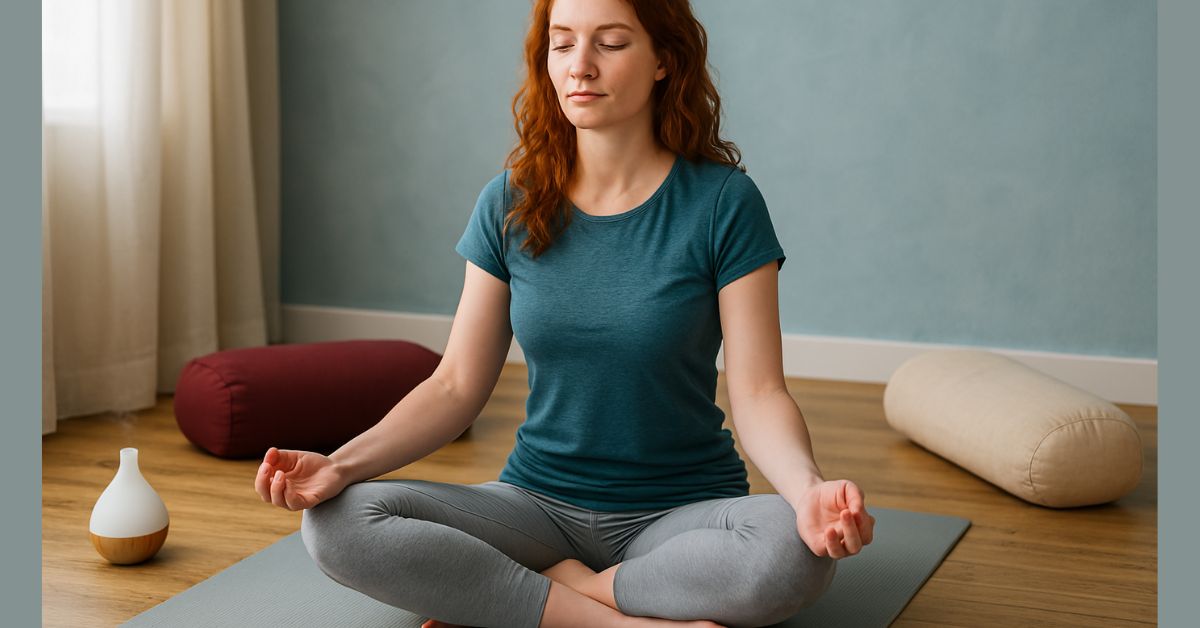
Yoga provides benefits that go well beyond improved flexibility. It has a soothing effect on the nervous system and helps reduce inflammation—a common contributor to persistent pain. By combining soft movement with mindful breathing, yoga lowers stress and supports healing.
A 2024 study published in JAMA Network Open reported that a 12-week yoga program led to reduced pain intensity and improved mobility in people with chronic low back pain.
Studies have noted improvements in conditions like fibromyalgia, arthritis, and chronic low back pain when people follow a well-structured, gentle yoga routine. The connection built between mind and body can help break the cycle of tension and discomfort many face every day.
Yoga is especially helpful for fibromyalgia. Recent research published in the Yoga and Mind-Body Interventions Journal showed a significant drop in pain, fatigue, and anxiety in participants practicing gentle yoga.
Scientific research explains that even simple physical movement increases blood flow to sore areas, speeding up the healing process. Early investigations also show that mindfulness-based practices, including yoga, support better pain management. Integrating gentle yoga into your routine may reduce the need for invasive pain treatments while gradually building strength and balance—especially important for beginners or those who have been inactive due to pain.
When performed correctly, yoga addresses both the physical symptoms and the mental strain that often accompany chronic conditions. Many individuals experience noticeable relief after introducing these soft, controlled movements into their daily habits. The combination of steady movement and thoughtful breathing offers an all-in-one approach that can lead to sustained comfort.
The natural, step-by-step progression of yoga makes it accessible, even if you suffer from chronic pain. It can be easily modified to suit various ability levels, making it a very important option for anyone aiming to manage pain without a heavy reliance on medication or intense workouts. Many people are now turning to yoga as a complement to other pain treatments because its benefits extend beyond the body to calm the mind and reduce anxiety.
According to a 2023 systematic review from Wiley Online Library, yoga helped reduce joint pain and inflammation in those with rheumatoid arthritis—without the risk of overexertion.
Safety First – Yoga Tips for Chronic Pain Sufferers
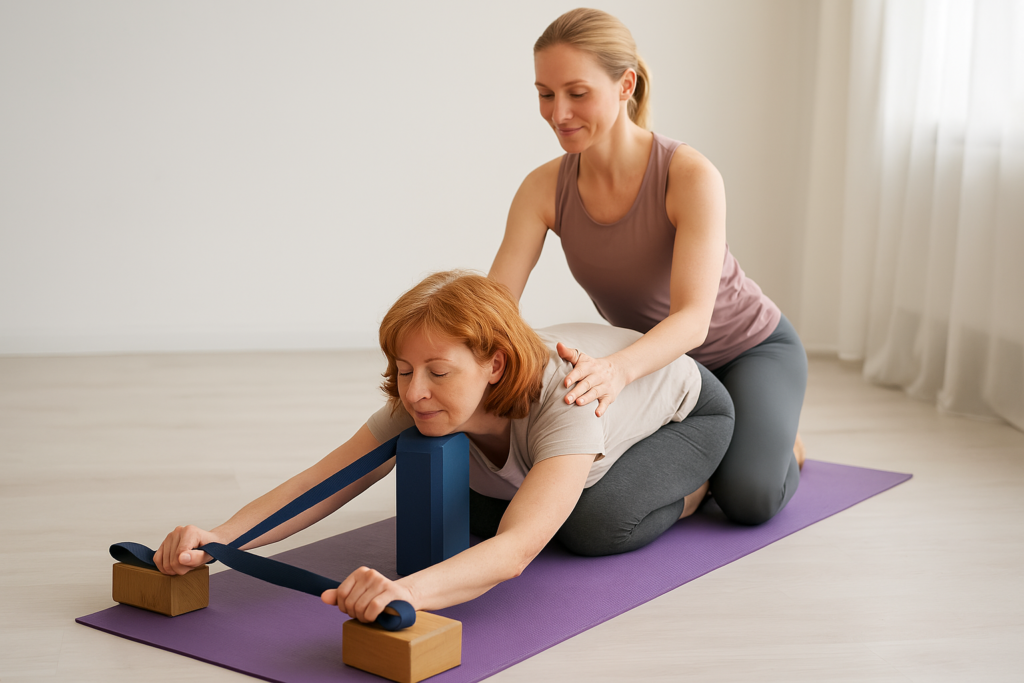
Before you roll out your mat, it’s critical to put safety at the forefront of your yoga practice, especially when you’re managing chronic pain. Practicing yoga for chronic pain relief requires listening to your body and working with it, not against it.
🔹 Start Slow and Modify as Needed Pushing too hard can lead to injury or increased discomfort. Begin with short sessions and gradually increase the length and intensity as your body allows. Use props like yoga blocks, straps, and bolsters to adapt each pose to your comfort level.
🔹 Use Supportive Props Props aren’t just for beginners—they’re essential tools for protecting joints, reducing strain, and improving alignment. For example, using a chair for balance during standing poses or a bolster under your knees during relaxation can make a world of difference. (You also might want to checkout our article “The Best Fitness Toolkit for Chronic Pain Relief“.)
🔹 Listen to Your Pain Signals Yoga for chronic pain relief should never feel sharp, stabbing, or painful. Mild stretching is okay, but if anything feels like too much—back off. Always respect your pain threshold and skip movements that feel unsafe.
🔹 Warm Up and Cool Down A gentle warm-up prepares muscles and joints, while a proper cool-down prevents soreness and supports recovery. Even 5–10 minutes of gentle stretching and breathwork before and after your session can enhance results and reduce flare-ups.
🔹 Consult a Professional If Needed If you’re unsure about form or safe modifications, consider working with a certified yoga therapist or instructor who specializes in chronic pain. Many offer online sessions, making support accessible from home.
By honoring your body’s limitations and making thoughtful adjustments, yoga for chronic pain relief becomes a safer and more sustainable part of your chronic pain relief plan.
7 Soothing Yoga Poses to Ease Chronic Pain (Backed by Science)
Below are 7 gentle yoga for chronic pain relief poses, each designed with specific benefits that target chronic pain. You’ll find details on the benefits, instructions, and simple modifications to tailor each pose to your needs.
1. Child’s Pose (Balasana)
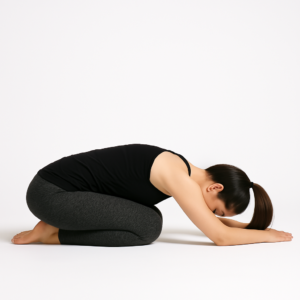
This pose gently stretches the lower back, hips, and thighs while inducing a calming effect. Begin by kneeling on the floor and sitting back on your heels. Slowly lower your head and chest forward until your forehead rests on the mat. You can extend your arms along your sides or stretch them forward. For added comfort, try placing a bolster under your chest. This pose helps release tension in the back muscles and lowers overall stress. 👉 Research suggests that restorative poses like Child’s Pose activate the parasympathetic nervous system, which promotes relaxation and pain relief.
2. Cat-Cow Stretch (Marjaryasana/Bitilasana)

This fluid movement improves spinal flexibility and alleviates stiffness. Start on all fours and slowly alternate between arching your back like a stretching cat and dipping your back similar to a cow. The gentle motion massages the spine while easing tightness. Keeping the movements small and controlled minimizes discomfort and boosts mobility.
3. Supported Bridge Pose (Setu Bandha Sarvangasana)
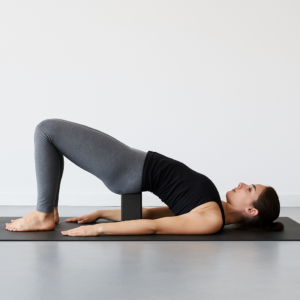
This pose opens the hips and strengthens the back without putting too much pressure on the spine. Lie on your back with your knees bent and feet positioned close to your body. Gently lift your hips upward, using a bolster or block placed under your sacrum for extra support. This added support not only makes the movement easier but also helps engage core muscles while relieving back tension.
4. Reclined Twist (Supta Matsyendrasana)
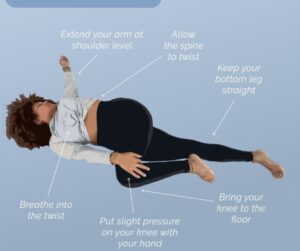
Reclined Twist offers a mild spinal twist that can help ease back pain. Lie on your back with your knees bent and folded. As you exhale, carefully lower your knees to one side while keeping your shoulders firmly on the floor. This twist produces a light stretch along your back and sides and may improve digestion. For extra reassurance, place a pillow between your knees.
5. Legs-Up-the-Wall (Viparita Karani)
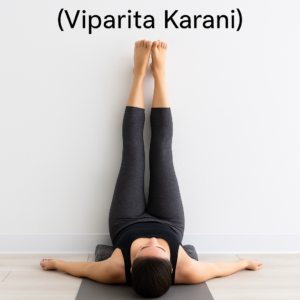
This restorative pose minimizes swelling and calms the nervous system.👉 Studies show this pose can help regulate the vagus nerve, which plays a major role in lowering stress and inflammation linked to chronic pain. Sit next to a wall and then lie on your back with your legs extended upward to rest against the wall. This position boosts blood circulation and eases leg tension. It is especially useful for those who experience fatigue or symptoms of fibromyalgia. Placing a folded blanket under your lower back can add further comfort.
6. Savasana with Support (Corpse Pose)
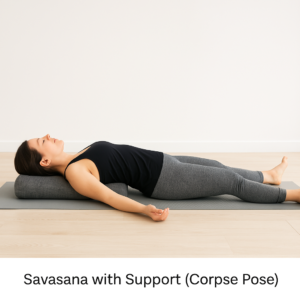
Savasana is an ultimate relaxation pose that invites deep rest. For chronic pain sufferers, laying a bolster or pillow beneath the knees can alleviate lower back strain. Lie flat on your back and allow your entire body to relax completely. Focusing on natural breathing helps calm both mind and body as you unwind.
7. Chair Pose (Utkatasana. Modified)
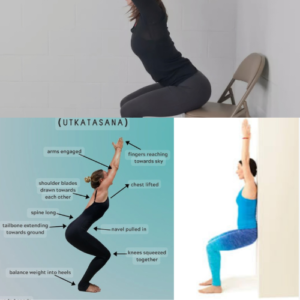
This modified version of Chair Pose builds leg and back strength without requiring a lot of floor work. Stand in front of a chair and use it for balance as you slightly bend your knees. Be sure to distribute your weight evenly while keeping your back straight. This posture supports healthy joint function and gently tones the core and lower body, making it a very important choice for those managing pain.
Bonus Tips to Give Your Practice a Boost
Even the best poses can be enhanced with a few smart strategies: 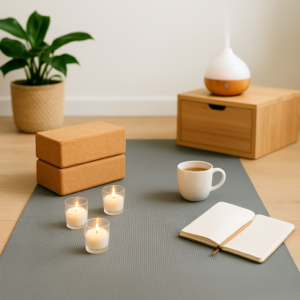
🔹 Create a calming environment – Use dim lighting, soft music, and aromatherapy to signal relaxation to your brain. This helps activate the parasympathetic nervous system and makes your practice more effective.
🔹 Incorporate breathwork – Deep breathing can regulate your nervous system and ease anxiety, both of which are tied to pain flare-ups. Try inhaling for 4 counts and exhaling for 6.
🔹 Use consistency over intensity – A 10-minute daily practice does more good than one long session per week. Slow and steady really does win this race.
🔹 Track your progress – Keep a simple journal to note how you feel before and after practice. Over time, you’ll notice trends in what helps most—and that insight is powerful.
🔹 Explore gentle programs – Not sure where to start? Our Ultimate Yoga Toolkit has beginner-friendly routines and gear selected specifically for chronic pain relief.
These bonus tips can transform your yoga sessions from “helpful” to “life-changing.” The more personalized and enjoyable your practice is, the more likely you are to stick with it.
Final Thoughts & Encouragement
Living with chronic pain can feel discouraging, but you don’t have to face it unarmed. Practicing yoga for chronic pain relief offers a gentle, effective, and empowering way to reclaim control over your well-being.
Every breath, every pose, and every moment of mindfulness is a step toward less pain and more freedom. Whether you’re new to yoga or returning after a break, these soothing poses and tips give you the tools to move with confidence—and comfort.
Start where you are. Listen to your body. Trust the process. And above all, be kind to yourself. Relief isn’t just possible—it’s within reach. 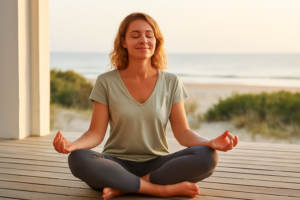
👉 Ready to feel better? Choose one pose from this guide and try it today. 👉 Want more support? Check out our Ultimate Yoga Toolkit to get started with the best gear and resources.
You’ve got this. 🌿
Frequently Asked Questions
🧘 What is the best yoga pose for back pain?
Child’s Pose is widely recommended because it gently stretches the lower back while soothing muscles, providing an accessible option for many.
🧘 Is yoga safe for arthritis or fibromyalgia?
Yes! When practiced at a gentle pace with appropriate modifications, yoga can be safe and beneficial for arthritis or fibromyalgia. Use props, listen to your body, and consult your doctor if needed.
🧘 How often should I practice yoga for chronic pain relief?
Start with just 10–15 minutes a day. Consistency matters more than duration. Daily short sessions are ideal to build strength, flexibility, and nervous system support over time.
🧘 What should I avoid during yoga if I have chronic pain?
Avoid any movement that triggers sharp pain or discomfort. Skip intense poses or transitions that feel unsafe. Stick with gentle yoga, as supported by research, and focus on breath, control, and rest.

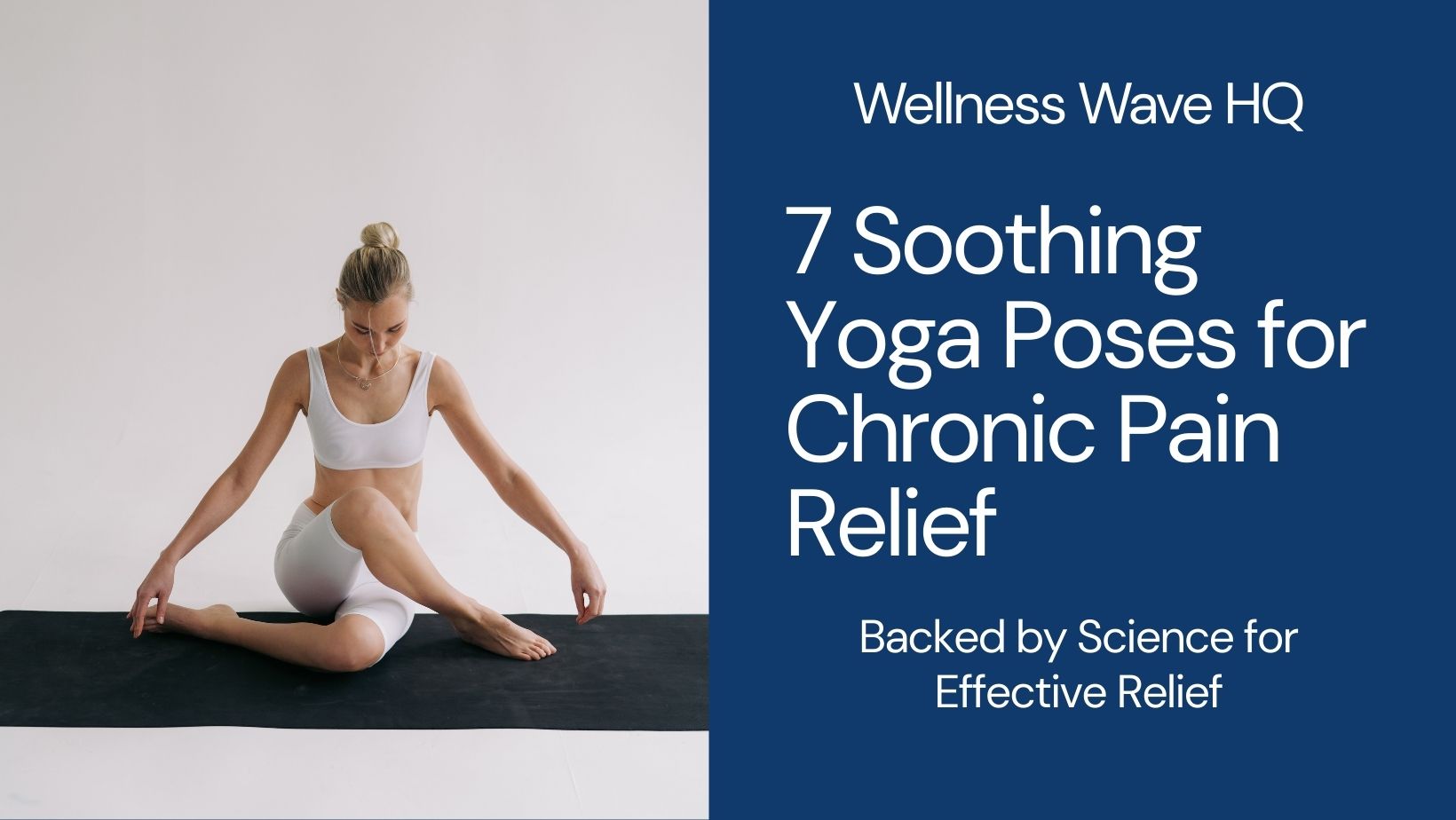
It’s really encouraging to see yoga being explored as a science-backed option for chronic pain relief, especially with such practical, accessible poses. I’m curious about how long it typically takes for someone to notice improvement with regular practice of these specific poses. Also, how do these compare in effectiveness to more traditional pain therapies like medication or physical therapy? I’ve personally found gentle yoga helpful for tension and stiffness, but I wonder if the benefits vary depending on the type of chronic pain (e.g., nerve vs. muscle).
Hi Slavisa,
Thank you for your thoughtful comment! It’s great to hear that you’ve found gentle yoga helpful for tension and stiffness. To answer your questions:
How long does it take to notice improvement with regular practice?
The time it takes to notice improvements can vary depending on the individual and the type of chronic pain. Some people might feel a difference in a few days or weeks, while for others, it could take a few months of consistent practice. The key is patience and consistency, as yoga works on both the physical and mental aspects of pain relief.
How do these yoga poses compare to traditional pain therapies like medication or physical therapy?
Yoga can be an excellent complementary therapy, but its effectiveness can depend on the specific type of chronic pain. For example, while yoga is great for managing muscle tension, it might not address nerve pain in the same way that physical therapy or medications would. However, many people find yoga to be an effective supplement to other treatments, especially when combined with proper guidance from a healthcare professional.
Do the benefits vary depending on the type of chronic pain (nerve vs. muscle)?
Absolutely! For muscle-based pain, yoga’s stretching and strengthening benefits can provide significant relief. However, nerve pain might require a more specialized approach. Yoga poses that focus on gentle movement and mindfulness can still help, but it’s always a good idea to tailor the practice to your specific condition, potentially working with a therapist or healthcare provider to determine what works best for you.
Thanks again for sharing your experience and thoughts, and keep practicing! Yoga can offer a lot of benefits for chronic pain management when approached mindfully.
Warm Regards,
Courtney
This was such an eye-opening read! I always thought yoga wasn’t for people with chronic pain like me, but your explanation about the right approach completely changed that mindset. The way you combined research with gentle, practical tips made it feel encouraging and doable. I’m especially curious about Legs-Up-the-Wall and how it helps the vagus nerve. Have you personally found it to be the most effective pose, or is there another one that surprised you with results?
Thank you so much for your kind words, Kavitha! I’m so glad the article changed your perspective on yoga for chronic pain. I totally get how intimidating yoga can seem when you’re dealing with pain, but as you pointed out, it’s all about the right approach and taking it slow.
Personally, I’ve had a similar experience—when I first tried yoga, I went full-on without really listening to my body, and I paid for it! But once I switched to a more gentle approach, focusing on easing my body into it, the benefits have been life-changing. It’s important to be mindful and not push too hard, as you said, especially when dealing with chronic pain.
For me, both Downward-Facing Dog and Reclining Hand-to-Big-Toe Pose are particularly effective. They help relieve the muscle pain in the top of my legs while also stretching out my lower back, which is where I often feel tension. The key for me has been taking things slow and listening to my body—being careful not to overdo it and always respecting where my body is that day. I’m not an expert on all the names of the poses (shh!), but these two have really worked wonders for me.
I hope this helps, and I’m so happy you’re giving yoga a try. Each little thing, like the anti-inflammatory diet, yoga, and taking care of your mental health, are all tools in my arsenal against chronic pain. We each must learn what works for us, at our own pace.
Warmest Regards,
Courtney